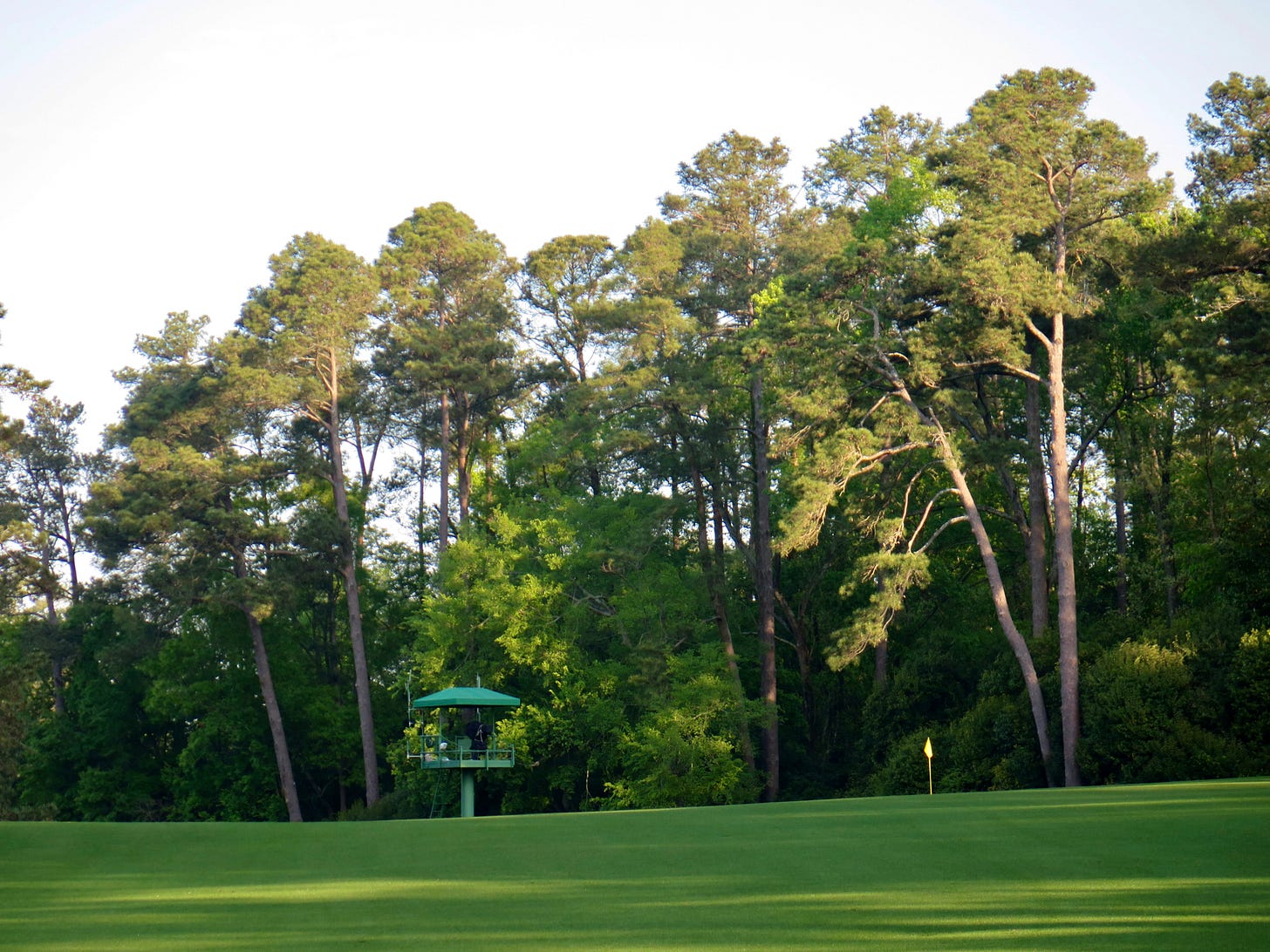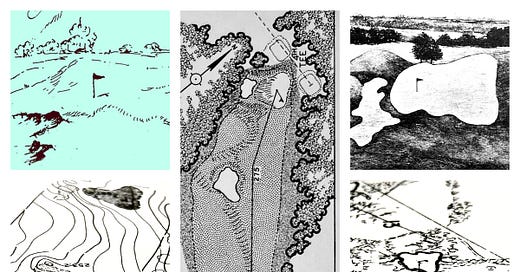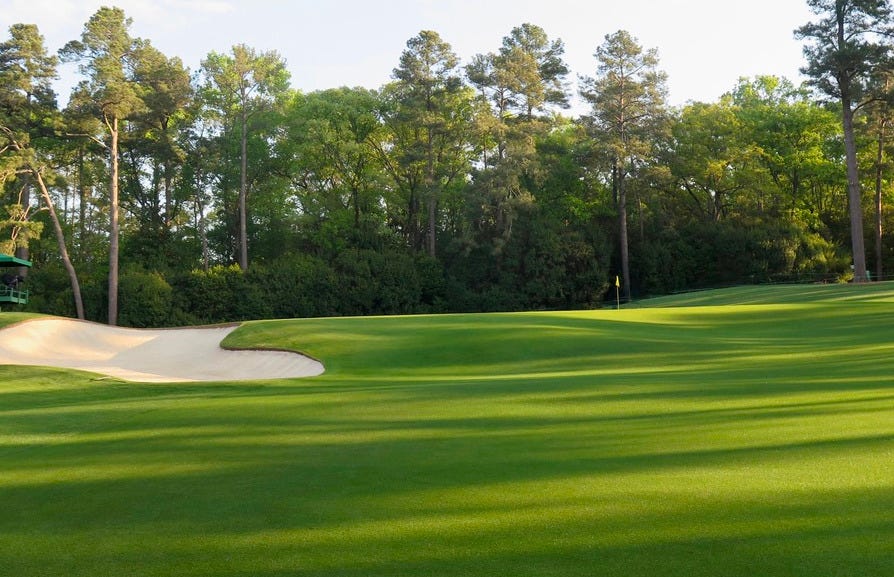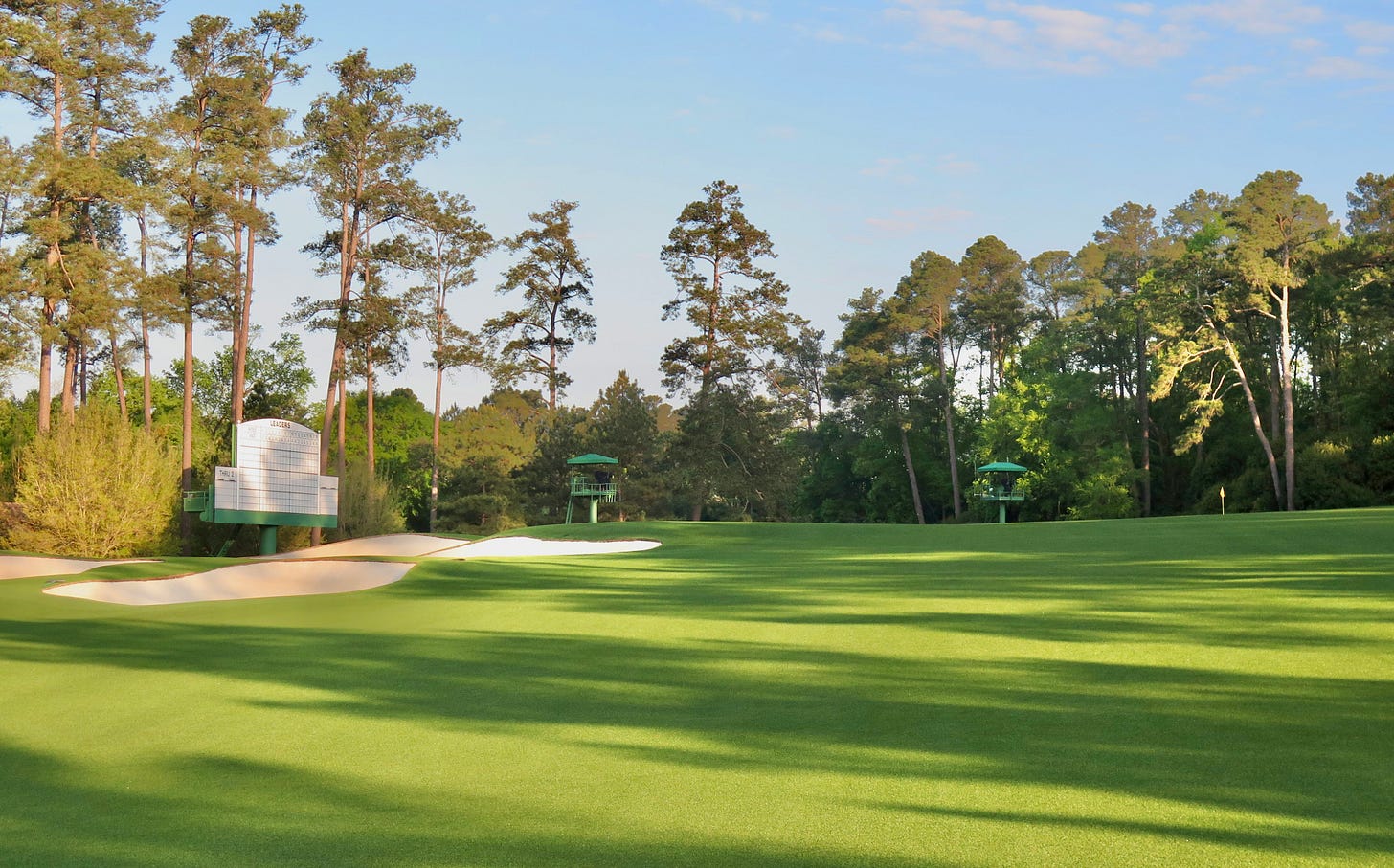Part 2: The Third At Augusta National
Player opine on whether the recent bomb and gouge approach is a good idea at such an unusual hole and pivotal early round test at The Masters.
Par: 4
Yardage: 350
Original Routing Hole Number: 12th
Name: Flowering Peach
Scientific name: Prunus persica
Historical scoring average: 4.08 (ranks 14th at Augusta National)
2024 average: 3.933 (with three eagles)
No matter what’s going on in the landing area or with distance spikes, Augusta National’s third has always been about the green. It’s perched annoyingly atop a small ridgeline, and over time, its right and rear falloffs have been accentuated. The supposedly lightly-changed hole has been heavily tinkered with and the green made even tougher to hit through the years, yet in a true miracle, never has the club tried to make the putting surface more overtly visible, which makes the third a nice nod to Augusta National’s “inland links” intent.
Any wise patron who has parked sat and watched from in the small area right of the green can attest to occasional disasters at the third coming more frequently from players driving close to the green and getting too cute with one of the most difficult pitch shots in the world. Sometimes they hit a great shot and the target proves too small for even the best.
Armed with the power to get as close as possible to the putting surface, the modern pro often sticks to the same data-driven script used every week no matter the course, state of their game, or realization that it’s okay to make boring pars over the course of an intense 72-hole tournament. Analytics also fail to take into account the awkwardness of the uneven lies or the difficulty of a shot to an infinity green where only the flagstick is visible. Nor does it account for the trickiness of hitting wedge shots off Augusta National’s into-the-grain fairway lies. But the data!
Setting aside Masters pressure, wind, or even the big first bounce of modern balls struck without softer-landing cut spin (except Justin Thomas), the list of variables should cause players and caddies to relegate the data to a minor role in third-hole decision-making.

Yet the bomb-and-gouge game built on data has less information than ever to support a “lay-up” after only a handful of players are playing safe. At the Masters, those are the guys who ordered an extra bottle at the Champions Dinner and who aren’t even thinking of bombing over the fairway bunkers. And maybe most bizarre of all in preaching the gospel of modern analytics: the inability to gauge what kind of stress is involved in an aggressive approach to the course over a safe one. There are easy fours and, as any patron will tell you, some very adventurous fours at “Flowering Peach.” In a Masters era of intense five-hour-plus weekday rounds, swirling winds, greens Stimping 14, and more premium on accuracy off the tee than in past decades, those boring pars can do wonders for mental health over four high-stress days. The greatest—your Jack’s and Tiger’s--have always valued boring in majors.
The third hole serves as an early stress-test and birdie chance before the hang-on-for-dear-life stretch of 4-5-6-7. As the 2025 approaches and we are still three Masters away from a possible rollback, the tee shot stress has been minimized by the ability to bomb away from the tee toward the widest part of the hole using the most forgiving club in the bag.
“There's not too much thought to the tee shot anymore,” says 2008 Masters Champion Trevor Immelman. “You're looking at about 275, 280 to cover the set of bunkers down the left-hand side, so the majority of them have got that shot, no problem. So if it's calm, even if the hole location is on the left--which is the most tricky--we're still seeing guys blasting it down there just short of the upslope and then playing 15 or 20 feet out to the right of the hole from about 60 or 70 yards.”
Into the wind, Immelman says players still “have to make a decision” but nearly all players want a shorter, more lofted approach iron generating the most spin.
“More spin means more control,” Immelman says.
While Rory McIlroy apologetically believes the tee shot today is a bit “thoughtless,” he says it wasn’t always that way.
“My first Masters was 2009 and I remember you had to hit a good drive to clear those bunkers. The only [pin] I think about not hitting driver is when it’s front left. Even when its front right I try to hit it into the front bunker and get an angle up the green.”
Playing close to the green has become more popular now that players are able to crank one out there 330. In faster conditions, the large valley in front of the green acts more like a pinball machine during Masters week. Drives run up the slope toward the infinity green, then down and sometimes in a swooping half-circle as they ride the grain. Watching what the ball does when it lands off the tee and into the green is one of the more nuanced Masters spectating pleasures.
Increasingly, players have been happy to catch the greenside bunker for what is a pretty simple recovery shot from the manicured sand. Adam Scott hit such a drive in last year’s final round, accounting for one of the three eagles in 2024 when he holed out from the sand.
“It’s become an almost drivable par 4, which I’m sure it wasn’t intended to be,” the 2013 champion says. “Certainly it’s a different start point from MacKenzie’s day to where we are today.”
Scott has seen the change in tactics over his Masters career.
“It was always a layup my first times there,” Scott said “A 3-iron usually, or maybe if you were feeling good, a 3-wood equal with or just past the bunkers to get a level shot into the green. I hit a lot of nice wedges to the left pin from there. Which now seems harder to do for some reason.”
Bobby Jones highlighted the “other” option of nestling a tee shot just past the bunker complex before the additional bunkers were added in 1982.
“The aim here should be slightly right of the center of the fairway onto the high ground which gives good visibility of the green and also provides the best angle of approach to any flag location,” he wrote in 1960’s Golf Is My Game. “The green on the left is very shallow; on the right side, it is very deep but slopes away from the player so that it is not easy to be certain of the exact location of the flag.”
Jones said that dealing with the obstructed visibility was key to the second.
“With the pin on the left, a second shot played either short or over leaves a very difficult pitch to be made which almost always results in the loss of one stroke, often two. With the wind behind, the wise player will play for the center or left-center of the green, hoping to get down in two putts for a par four.”
The visibility generally worsens the closer players get to the green since most tee shots roll down to the bottom left. But teeing off toward a nearly 50-yard-wide area away from the right-hand pines has become the play for an increasing number of players. The winner in two of the last three Masters has taken this route, with detours.
Scottie Scheffler has been content to drive—or even miss—as far left as possible because he can it into the length of the green. After the disastrous “second cut” years when Hootie Johnson narrowed many landing areas, the fairway has been expanded in this area (but is brought in a few paces by tournament time to accommodate patrons.)








